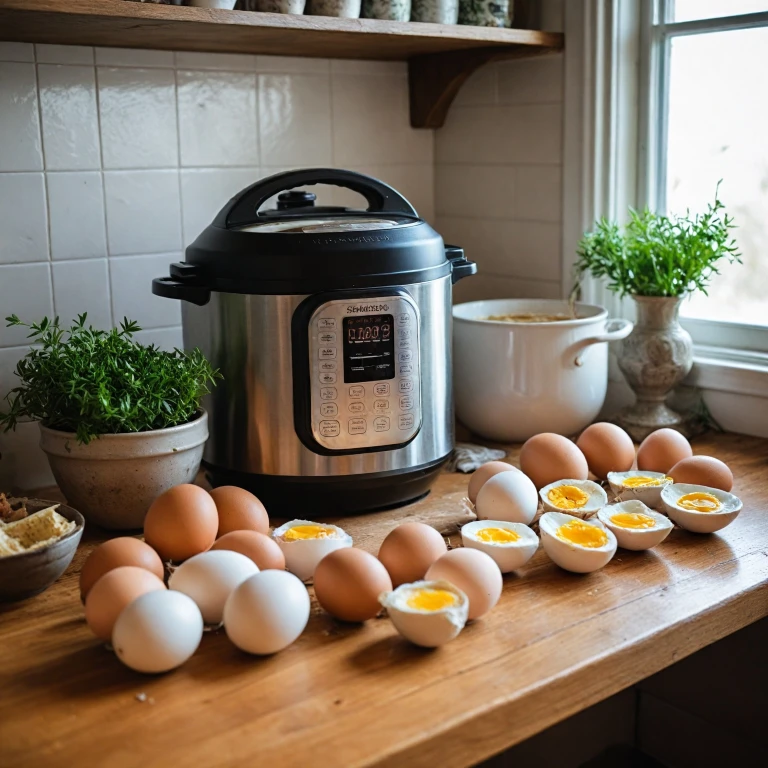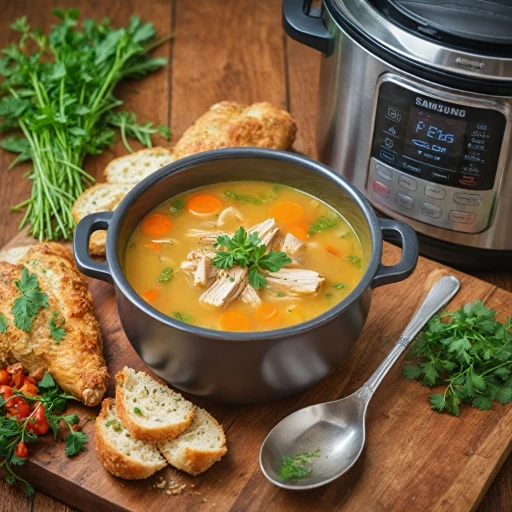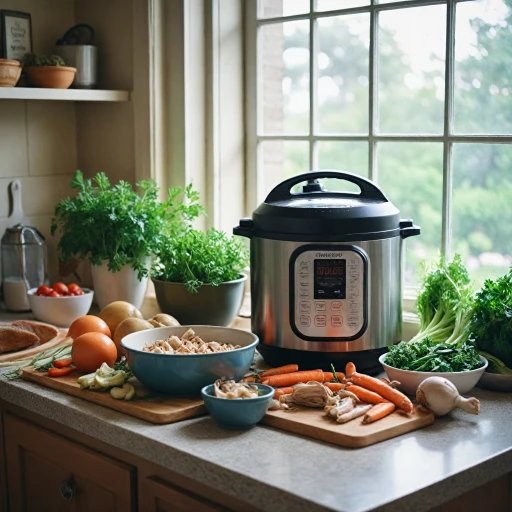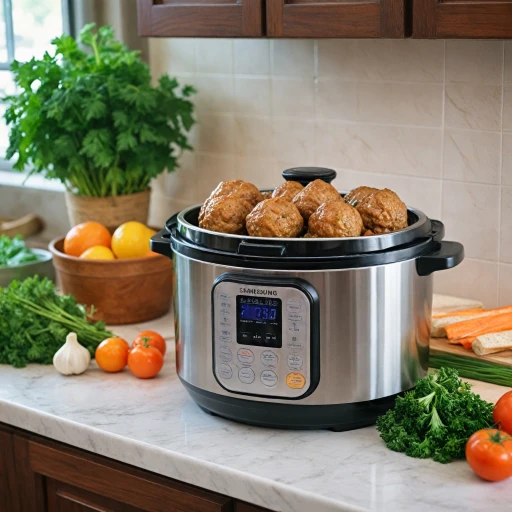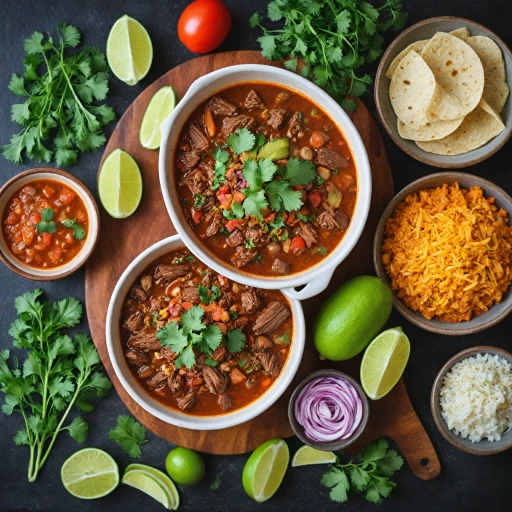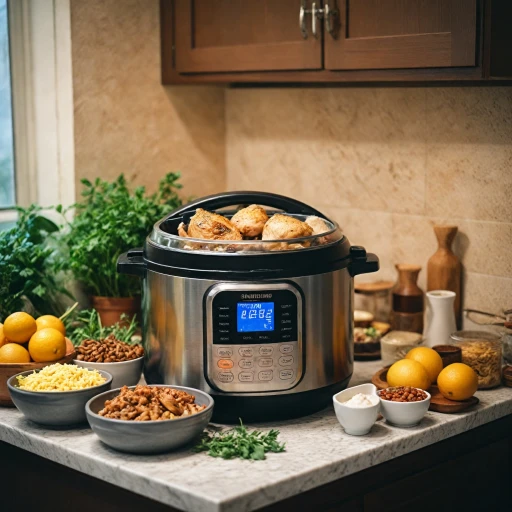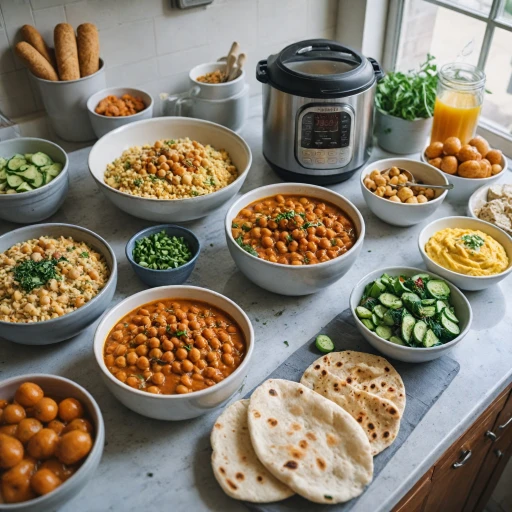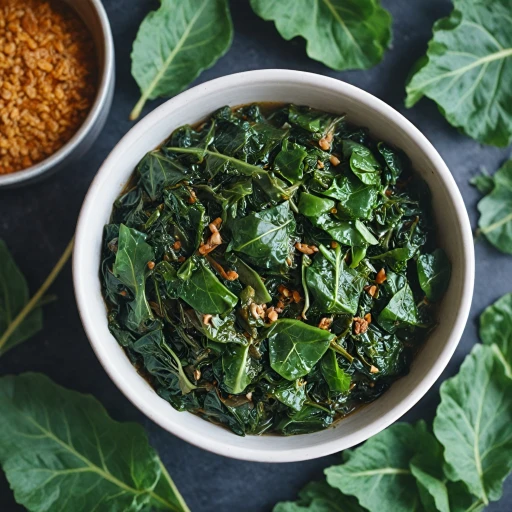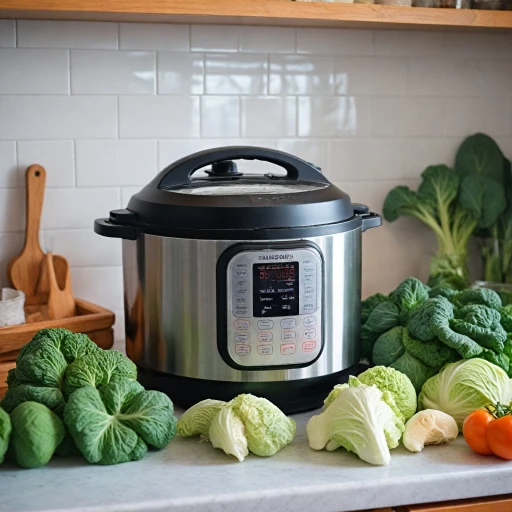Understanding the Basics of Cooking Eggs in an Instant Pot
Exploring the Art of Egg Cooking in a Pressure Cooker
When it comes to perfecting eggs with an instant pot, understanding the basics of how this ingenious kitchen gadget works is key. The instant pot, a type of electric pressure cooker, uses high pressure and steam to cook food quickly and efficiently. This method is ideal for eggs, allowing both less time and more consistent cooking results. Cooking eggs in an instant pot involves placing them on a trivet inside the pot, with a specific amount of water, usually around 1 cup, at the bottom. This water is essential for creating the steam needed for the cooking process. Depending on your preferred recipe, you can decide whether you want hard boiled, soft boiled or any degree in between. The crucial factor here is the cook time in minutes. For hard boiled eggs, pressure cooking for about 5 minutes on high pressure with a natural release is commonly recommended. Following this, immediately plunging the eggs into an ice bath for a few minutes ensures they are easy to peel. An instant pot also provides versatility beyond boiling. Should you face issues like eggs cracking or varying cook times, know that adjustments can be made easily. Remember to follow key safety tips and properly maintain your instant pot to ensure its longevity. Cooking eggs with an instant pot opens up a realm of possibilities and recipes, not just for classic preparations but also creative culinary endeavors. Learn more about the techniques that could make perfect hard boiled eggs a staple in your kitchen.Choosing the Right Egg Type and Size
Selecting the Ideal Egg for Your Instant Pot Creations
When it comes to achieving the perfect boiled eggs in your Instant Pot, the first step is choosing the right type and size. This decision can greatly affect the cooking time and the end result, whether you're aiming for soft-boiled or hard-boiled. Here's what to consider:- Egg Type: While any eggs will work in an Instant Pot, it's best to use fresh eggs for a firmer texture. Farm-fresh eggs can be harder to peel, so if ease of peeling is a priority, opt for slightly older eggs.
- Egg Size: Large eggs are the standard and can be cooked consistently using typical time settings. Adjustments may be necessary when using medium or extra-large eggs, with smaller eggs requiring slightly less time and larger ones needing a bit more to reach the desired doneness.
Step-by-Step Guide to Cooking Eggs in an Instant Pot
Step-by-Step Method for Perfect Eggs
Cooking eggs in an Instant Pot is remarkably straightforward, with the potential for achieving perfectly boiled results every time. This section will provide a detailed guide, ensuring that even beginners can find success with their pressure cooker.
Preparation: Setting the Stage
Before beginning the cooking process, gather your ingredients and tools:
- Instant Pot
- Eggs (of your chosen type and size)
- 1 cup of cold water
- A trivet or egg rack
- A bowl for an ice water bath
Cooking Process
- Pour 1 cup of cold water into the Instant Pot, ensuring an adequate base for steam and pressure generation.
- Place the trivet or egg rack inside the pot, then carefully arrange the eggs.
- Seal the lid and set the pressure valve to the "sealing" position.
- For consistent hard boiled eggs, set the Pressure Cook function to high pressure for 5 minutes.
- After the cook time elapses, allow for a natural release of pressure for at least 5 minutes. This helps prevent cracking and ensures a gentle cooking process.
Quick Pressure Release and Ice Bath
Once the natural release is complete, swiftly move the pressure valve to "venting" to perform a quick release of any remaining pressure. Carefully remove the lid, using caution as both the cooker and eggs will be hot.
- Transfer the cooked eggs to a bowl filled with ice water to create an ice bath. Let them rest for at least 5 minutes to stop the cooking process effectively.
- This method not only provides perfectly cooked hard boiled eggs but also facilitates easy peeling.
Exploration of Cooking Times
The cook time can vary based on personal preferences. For slightly softer egg yolks or runny centers, adjusting the high pressure cook time to 3 minutes with an extended ice bath will yield soft boiled eggs.
Experimenting with your Instant Pot under these guidelines should lead you to discover your ideal boiled egg. The combination of precision pressure cooking and a timed ice bath results in consistently excellent eggs.
Troubleshooting Common Issues
Addressing Common Snags in Egg Perfection
Cooking eggs in a pressure cooker, like the Instant Pot, can yield inconsistent results for any number of reasons. Whether you're aiming for softly cooked or perfectly hard boiled, achieving the ideal result can sometimes feel elusive. Here’s how to troubleshoot some of the most common issues you might encounter.Egg Consistency Dilemmas
- Overcooked or Undercooked Eggs: Misestimating cook time can lead to eggs that are either too firm or too runny. For a reliable outcome, start by determining the desired firmness and adjust time accordingly from our step-by-step guide. Remember, hard boiled eggs typically require around six to eight minutes on high pressure, followed by a natural release.
- Soft Spotty Yolks: If your yolks aren’t uniformly cooked, consider the positioning of the eggs within the pot. Overcrowding or uneven layering can lead to inconsistent cooking. Arrange them in a single layer using the steaming rack and avoid stacking.
Peeling Problems
- Difficult Peeling: Fresh eggs can be harder to peel, but an ice bath can aid in easy peel removal. Once the cooking time completes, quickly transfer the eggs to an ice bath for a rapid cool down. This helps the yolk set and creates a gap between the shell and egg white.
- Sticky Egg Whites: If bits of egg white cling to the shell, it may indicate insufficient pressure release. Ensure you follow the natural release method after pressure cooking to prevent this issue.
Water and Pressure Techniques
- Water Levels: Not enough water can stop the pressure cooker from building adequate steam. Always ensure a minimum of 1 cup of cold water at the base of the pot. This is crucial for maintaining even cooking and generating the pressure needed for the perfect method.
- Pressure Buildup: If your pressure cooker struggles to reach high pressure, consider checking the lid seal and valve for obstructions. A fully functioning pressure cooker is essential for perfecting eggs instant.
Creative Egg Recipes Using an Instant Pot
Creative Egg Recipes You Can Explore
Cooking eggs in an Instant Pot can go beyond just making perfect hard boiled or soft boiled eggs. Here are some inventive ways to utilize your Instant Pot and eggs:- Frittata Adventure: Whisk a few eggs with some milk, add your choice of cheese, meats, or vegetables, and place the mixture into a greased pot. Pressure cook for a few minutes and let it naturally release. You’ll be surprised at how easy peeling can be traded for easy bites of a delightful frittata.
- Egg Bites Delight: Mimic coffee shop favorites by using egg molds in your Instant Pot. Blend eggs with cottage cheese for a creamy texture, add bacon bits, and cheese, then fill the molds. Use the high pressure method, and finish off with a quick release for perfect bites.
- Egg Drop Soup Magic: Elevate your soup game by drizzling whisked eggs into your instant pot filled with broth and seasonings. The pressure cooker will transform these simple ingredients into a comforting soup in just a few minutes. Use cold water as a garnish for that cool, refreshing finish.
- Ice Bath Boiled Eggs: Instead of the traditional hard boiled eggs, experiment with creating a crisp, refreshing taste by transferring the boiled eggs into an ice water bath. This method not only makes peeling easier but can add a subtle chill to your recipe on hot days.
- Quiche Perfection: Prepare a crustless quiche in a cake pan that fits into your pressure cooker. The perfect blend of eggs, cream, and your favorite fillings can be crafted effortlessly with the Instant Pot’s perfect time management ability.
